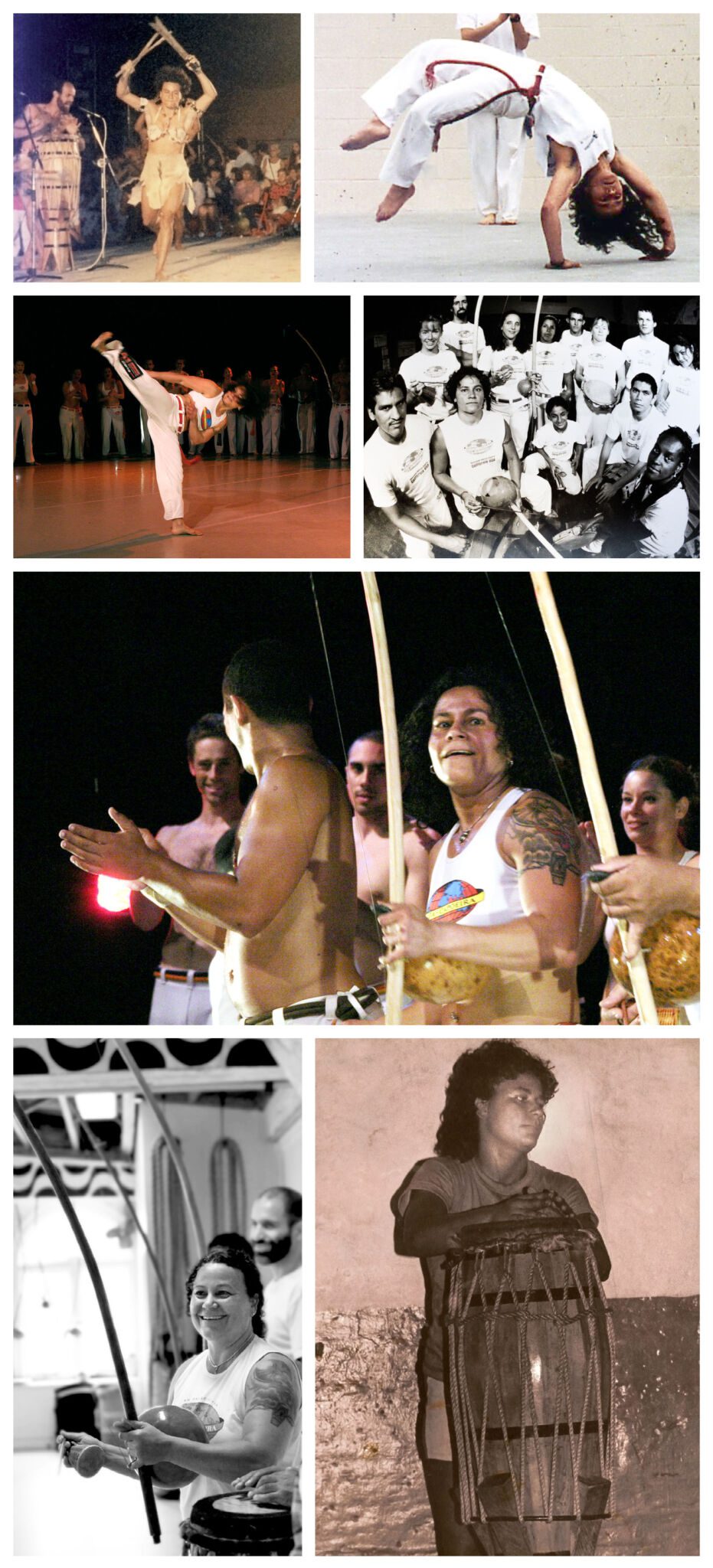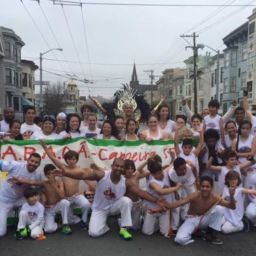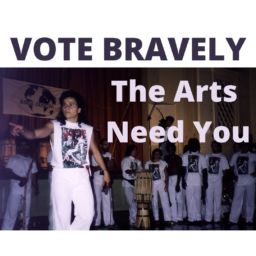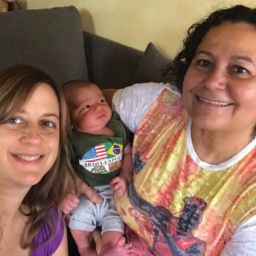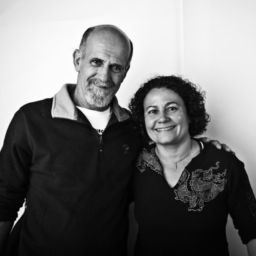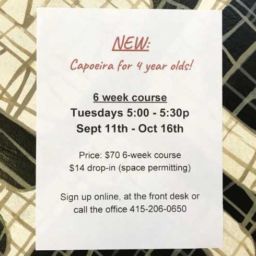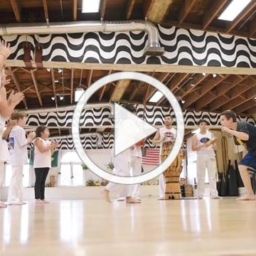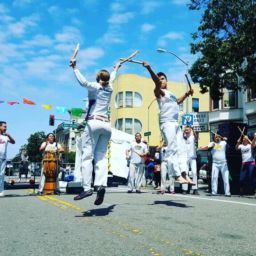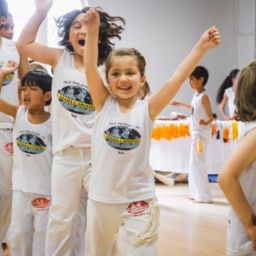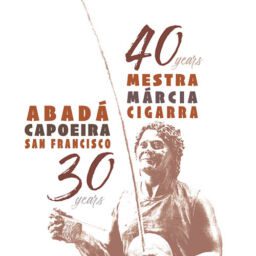
INTERVIEW with MÁRCIA TREIDLER
DO YOU REMEMBER THE DAY YOU STARTED CAPOEIRA?
Yes, it was November 28, 1982. I began training with Mestre Camisa, a student of the legendary Mestre Bimba who is considered one of the two founding fathers of contemporary Capoeira.
CAN YOU TELL US SOMETHING ABOUT THAT TIME?
I first saw Capoeira when Mestre Camisa brought a group of his students to my high school for a performance. From that day it was my dream to start classes. It took me a year to convince my mom to let me start classes, due to society’s prejudices against the art. At that time I was very athletic, taking dance, swimming, and gymnastics, all of which I enjoyed. But Capoeira caught my attention in a way that was different. I felt a magical connection and a deep desire to pursue it at all costs.
WHEN DID YOU KNOW CAPOEIRA WAS GOING TO BE A BIG PART OF YOUR LIFE?
I believe after the first year of training I was hooked. My love for and growth in Capoeira happened very organically. There were countless barriers I had to overcome– societal pressures; being a female in a male dominated art; proving my worth. But witnessing my own growth, coupled with unending support from my Mestre was enough for me to believe in myself and my dream to pursue a career in Capoeira.
WHAT WAS IT LIKE TO BE A FEMALE STUDENT IN THE 1980’s?
Throughout the 1980s there were only a handful of women training and none were taken seriously by male counterparts. I was determined to change the trajectory for women in the art. I earned respect through persistent hard work and support from my Mestre. By 1990, I had attained the highest level reached by any woman in ABADÁ- Capoeira, a status I maintain today.
WHAT WAS YOUR FIRST TEACHING EXPERIENCE?
In 1987, I started teaching street children in the favelas of Rio de Janeiro. At that same time, I also started teaching kids, teens, and adults in schools and gyms. My work experience with the street kids and in the favelas was some of the hardest and most important work I’ve done.
WHAT WAS YOUR LIFE AND CAREER LIKE BEFORE MOVING TO THE U.S?
Prior to moving to the US, I had already centered my daily life around Capoeira. I was training, teaching, and performing with Mestre Camisa’s performance company. I also was in college studying Physical Education, and worked teaching gymnastics for youth.
WHAT MOTIVATED YOUR MOVE TO THE U.S?
In 1988, I visited the Bay Area as a guest artist at SF State University and witnessed a sincere public interest in Capoeira. I could see Capoeira was at the brink of major development, and I felt a responsibility to ensure the integrity of the art was maintained during its expansion outside of Brazil.
In 1991, at age 25 I moved to San Francisco. I was motivated by a strong desire to be free from Brazil’s oppression culture towards me as a gay woman; to prove to myself and others I could be successful with Capoeira; and to explore the potential of Capoeira to positively impact American society.
WHAT WAS YOUR VISION FOR YOUR WORK IN THE 1990’s WHEN YOU FIRST STARTED TEACHING IN SF?
I had a vision to improve people’s life with Capoeira: an art rooted in values of inclusion, respect, diversity, community, and opposition to any form of discrimination.
Also, the style, technique and philosophy of ABADÁ-Capoeira was unique and different from the other schools of Capoeira in the US. I knew bringing ABADÁ to the Bay Area could enrich the area’s cultural and social standing.
HOW HAS YOUR VISION SHIFTED OR EVOLVED?
My vision is the same, only stronger. What has evolved is my appreciation for community: my students, friends, and the larger bay area. The support I have received helps me stay strong and true to my mission and inspires me to not give up when things get tough. No one gets anywhere alone, we are all stronger together.
WHAT ARE YOU MOST PROUD OF?
I am proud of all of my achievements including receiving the “Mestra” title given to me by the most respected living Mestre in history, Mestre Camisa. Those who know Capoeira can’t deny his importance in the development and expansion of this art around the globe.
I am proud to have received a National Interest Waiver as an “Alien with Extraordinary Abilities,” granting me permanent residence—something that would not have been possible without support from my students and recognition from several other Mestres in the field.
WHAT’S YOUR VISION FOR YOUR CAREER IN CAPOEIRA MOVING FORWARD?
My vision is to continue my work and to develop artists capable of continuing my legacy by sharing and developing Capoeira in their own unique way while maintaining the integrity of the art. I hope my work lives on long past my lifetime so generations to come can experience the magic that is Capoeira.
